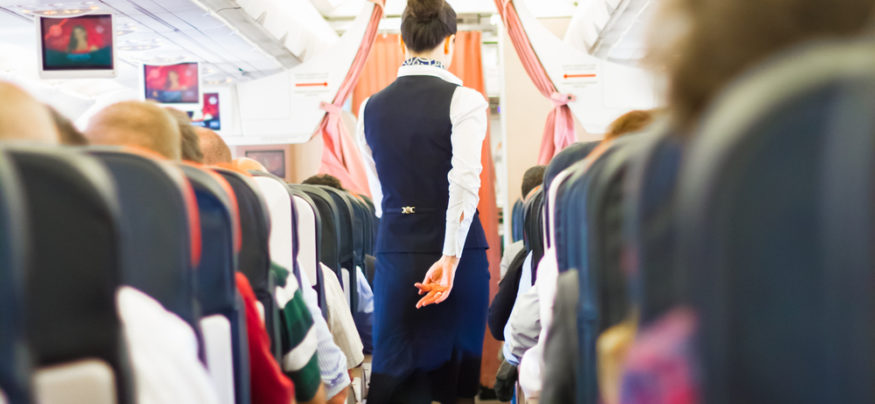Years ago, in-flight entertainment (IFE) meant watching movies on large, wall-mounted screens at the front of an airplane’s cabin. If you didn’t like the movie that was offered, well, you were out of luck. As the demand for IFE systems grew, user-facing technology was incorporated into the seatbacks, ushering in a new era of personalized entertainment. Locking the entertainment experience into the seatbacks, however, is neither comfortable nor convenient for passengers. That’s all changing thanks to wireless-enabled IFE systems.
In the world where 97 percent of airline passengers board with some form of personal electronic device, according to a 2015 study by SITA OnAir, wireless connectivity for entertainment is the way of the future. There’s a class of passenger known as “digital omnivores” that challenges even the most robust IFE system with constant demands for bandwidth and a fully engaged experience. And even less digitally voracious passengers desire entertainment, flight information, and food and beverage options at their fingertips, whether its accessed through an onboard IFE device or their personal device.
Digital Appetites Are Growing
Today’s airline passenger is constantly connected on the journey from his home to the seat on the plane. Throughout every step of the journey, from check-in through security, the passenger has access to mobile devices. The airline communicates with the passenger through these mobile channels about preflight and boarding information. The passenger can even pull up an e-ticket on his mobile phone to board the plane. Once on board the aircraft, however, the passenger is cut off from his digital ecosystem. This is where the opportunity for wireless, customizable IFE systems lies.
Passengers are accustomed to accessing content such as movies, television shows, flight information, destination planning and shopping at all times. So the ability to offer better and more timely content is critical for the IFE experience. The IFE system should allow passengers to order on-demand services, as well as to make purchases on board. Not only does this make it easier and more convenient for passengers to make purchases, but also it streamlines the process for the flight crew. Finally, to create a truly customizable experience, IFE systems will need to integrate with passengers’ personal entertainment devices.
Delivering a First-Class Experience
In recognition of modern airline passengers’ insatiable appetite for connectivity, and to keep passengers connected before, during, and after their flights, BAE Systems partnered with digital solution provider Infusion and Samsung. Together they developed the revolutionary new IFE solution for BAE’s cabin-of-the-future system, IntelliCabin. Using Samsung Galaxy tablets located at passenger seats, the IntelliCabin IFE interface supports content streaming, preloaded content and food and drink preorders. In addition, it can summarize a passenger’s expenses and itinerary. With an intuitive and rich user interface built into a simple design, IntelliCabin is extremely responsive and unlike any other in-flight technology that exists today. The new IFE system also can provide bring your own device (BYOD) wireless support.
According to Peter Rivera, chief experience officer at Infusion, the Intellicabin Immersive Flying Experience was designed from scratch with today’s travelers in mind. “The platform was designed to operate both as a native tablet solution as well as an HTML5 BYOD solution to ensure we are able to deliver the experience to all travelers,” Rivera says. “Aside from the expected movies, music and TV shows, our IFE also brings the latest games, e-magazines and e-books. We also offer refreshment ordering direct from the tablet.” In addition, the airline can push surveys to passengers to collect immediate feedback on the trip or to promote their loyalty programs
A key part of any IFE strategy is to thoughtfully integrate the installed solutions with the devices that people bring with them. Rivera says that mid to premium airlines have little choice in that they should be providing solutions directly to their customers regardless of the devices they bring with them. “The airlines are going to need to allow travelers to tap into their own personal entertainment and services ecosystems as the flight itself becomes a natural extension of their digital lives,” says Rivera. “Due to the proliferation of onboard high-speed Wi-Fi, flights will no longer be ‘bubbles’ disconnected from the normal flow of the traveler’s day.”
Exceeding Passenger Expectations
In order to deliver a high-end customer experience, IFE devices must provide the power and performance to run games and streaming media, and process transactions while being responsive and smooth. If the device lags or stutters, all the efforts in developing world-class software and user experience will amount to little. To that end, BAE and Infusion chose Samsung Galaxy tablets which offered the features and specifications to withstand several life cycles of innovation in the marketplace. Durability was also a key factor as the equipment operates in a variety of unpredictable circumstances that require toughness and resistance to scratches, jostling and the errant six-year-old passenger. The tablets also provide a high-resolution screen to meet the expectations of passengers who are accustomed to HD viewing at home.
As customers come to expect personal in-flight entertainment, this new solution highlights the potential to deliver a seamless and connected experience for passengers while supporting greater efficiencies for the crew and carrier.








